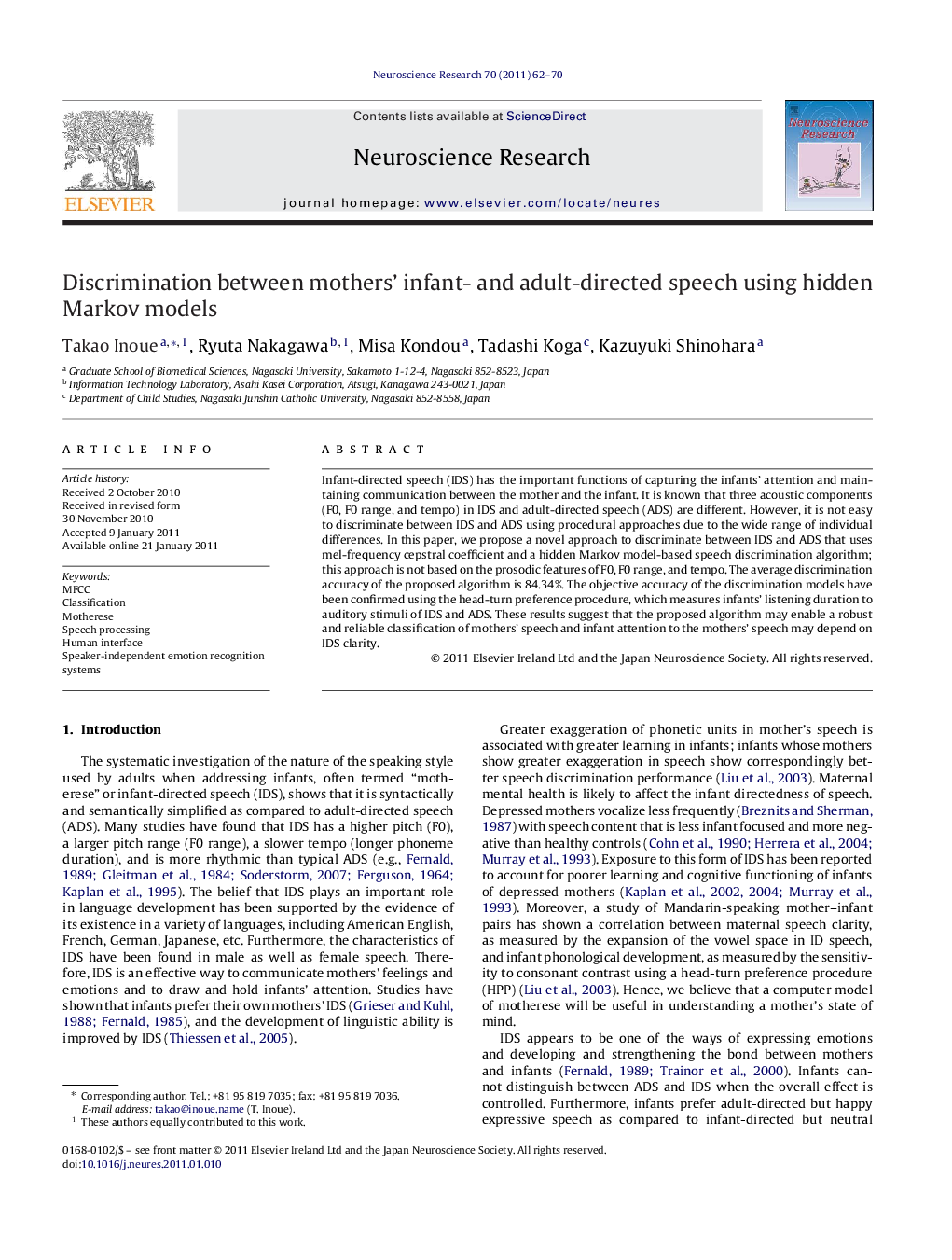| Article ID | Journal | Published Year | Pages | File Type |
|---|---|---|---|---|
| 4352278 | Neuroscience Research | 2011 | 9 Pages |
Infant-directed speech (IDS) has the important functions of capturing the infants’ attention and maintaining communication between the mother and the infant. It is known that three acoustic components (F0, F0 range, and tempo) in IDS and adult-directed speech (ADS) are different. However, it is not easy to discriminate between IDS and ADS using procedural approaches due to the wide range of individual differences. In this paper, we propose a novel approach to discriminate between IDS and ADS that uses mel-frequency cepstral coefficient and a hidden Markov model-based speech discrimination algorithm; this approach is not based on the prosodic features of F0, F0 range, and tempo. The average discrimination accuracy of the proposed algorithm is 84.34%. The objective accuracy of the discrimination models have been confirmed using the head-turn preference procedure, which measures infants’ listening duration to auditory stimuli of IDS and ADS. These results suggest that the proposed algorithm may enable a robust and reliable classification of mothers’ speech and infant attention to the mothers’ speech may depend on IDS clarity.
Research highlights► IDS and ADS style can be separated and evaluated with a high degree of accuracy. ► Infants did not have a preference for speech with low motherese likelihood score. ► Infant's attention to mother's speech depends on the clarity of motherese.
